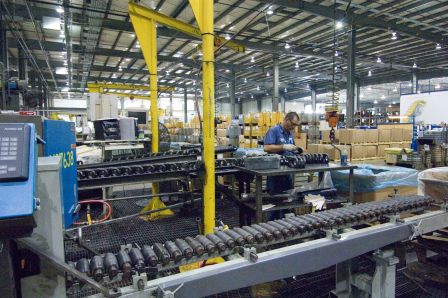Complex supply chains, compressed production cycles, and mass customization are driving today’s high manufacturing and operational costs. Kitting, the gathering of components and parts needed for the manufacturing of an assembly or product, requires significant planning and resources. The problem is every hour and every dollar has to count when it comes to production and fulfillment.
For OEMs, line-side part kits are built for use on assembly lines where off-line pickers place the necessary parts for a model or component into a container which are then sequenced within the line. Or, to support consumer packaged goods for retail distribution, kitting entails putting product combinations together, often performed alongside value-added activities such as labeling and packaging.
By outsourcing kitting, many of the following manufacturing and distribution dilemmas can be alleviated or solved:
Space constraints. Lack of manufacturing space can prohibit or overcrowd your production operations, making it difficult to perform other activities such as kitting and sequencing. When your non-core production and distribution activities are outsourced, space requirements can be reduced, supporting lower costs and reallocation of space to core functions. Depending on your requirements and floor capacity, a flexible 3PL will be able to provide kitting services directly on-site or at nearby facilities with just-in-time delivery.
Bogged down and inefficient supply chains. Supply chains can become overloaded when non-core activities are performed in-house. Procurement and operations managers may manage thousands of parts and SKUs just for one sub-assembly or product line. Managers have to do more task allocations on the shop or distribution floor. Line workers may be required to gather items for kits, which slows production lines and invites quality or safety issues. These extra tasks often result in poor manufacturing throughput and inefficient production line processes.
Outsourcing activities such as kitting reduces the volumes of “moving parts” managed whether in the procurement stages or on the production floor.
Manufacturing throughput is improved when complexity at production centers is reduced. Depending on the level of involvement of the 3PL in your enterprise resource planning (ERP) practices, procurement processes are also improved or simplified with outsourced activities. A good 3PL will be familiar with your particular ERP system and provide management with better visibility into inventory and parts in production by connecting with your ERP.
Additional cost and budgeting issues. Inefficient supply chains make it difficult to control budgets resulting in lower profit margins. By outsourcing kitting and other time- and labor-intensive supply chain activities, raw material usage is reduced along with interim manufacturing overhead because manufacturing costs are more tightly controlled. Less unused material lowers scrap rates, making production far easier to budget.
Adding it up. As many of these examples illustrate, waste and inefficiency in the supply chain can be reduced with the contract outsourcing of kitting which serves to improve quality, including order accuracy. With less complexity, related safety risks from cramped spaces or unattended production lines (caused by line workers picking parts for kits) may also be reduced. When kitting is combined with other supply chain activities such as inventory management, light assembly, and warehousing, further efficiencies can be gained.
G&D Integrated, a full-service 3PL provider, provides domestic transportation, freight brokerage, contract logistics and supply chain services to customers in a variety of industries. The company has over 40 years of experience in serving global OEMs across North America with kitting and other contract manufacturing services. G&D leverages lean manufacturing practices to ensure the highest possible levels of efficiency and cost competitiveness.
About the author: Mark London is VP, Sales & Marketing at G&D Integrated

